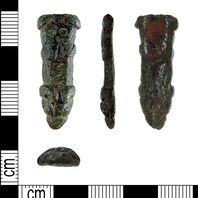
Viking Objects
Copper-Alloy Strap-End (DENO-E40172)
An incomplete copper-alloy strap-end decorated with zoomorphic motifs and stylised human or animal head. It has been identified typologically as belonging to Thomas Class B Type 4.
Read More
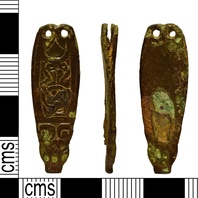
Viking Objects
Copper-Alloy Strap-End (NARC-033287)
An incomplete copper-alloy strap-end classified as Thomas’ Class A, Type 1, with zoomorphic terminal and Trewhiddle-style decoration. The decoration is composed of an incised pattern which depicts two semi-circular ears below which are two triangular eyes to either side of the head can be see, flanked by a forked central brow. The central panel bears Trewhiddle-style decoration depicting a beast with serpentine curvilinear tail.
Read More
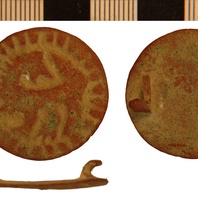
Viking Objects
Brooch with Backwards-Facing Beast (NLM-08BAEB)
It has been suggested that the beast motif on this brooch represents a horse, but identification is uncertain. This brooch was probably the property of an ordinary person rather than of a member of the social elite. It is of a fairly common type. For more information on Scandinavian jewellery in England check out our blog: Brooches, Pendants and Pins: Scandinavian Dress Accessories in England.
Read More
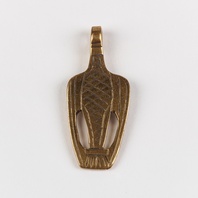
Viking Objects
Reproduction Bird Pendant
A reproduction bird pendant based on one found at Langford, Nottinghamshire. The nearest parallel to this type of brooch is one from Yaroslavl in Russia. The bird symbol, very similar to the one depicted on this pendant, was used by the Rurik dynasty which had started the conquest of Slavic lands in the mid 9th century and later formed the polity of Rus’. With some exceptions, pendants were generally worn by women as an accessory to Scandinavian dress.
Read More
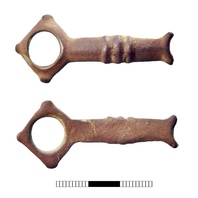
Viking Objects
Harness Fitting (SUR-38C283)
A simple double ended strap-link used as part of a harness. The metal has a reddish tint often associated with Anglo-Scandinavian material.
Read More
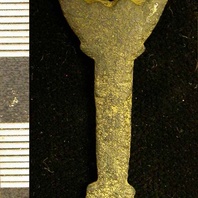
Viking Objects
Copper-Alloy Key (LEIC-931912)
Slide keys such as this example are generally known as ‘Viking keys’ due to similarities in shape with excavated examples. However, its T-shaped projections at the base have no identified parallels but the design could possibly show Anglo-Scandinavian influence. Keys were not only practical items but also symbols of status. Women often carried the keys to the family’s chests of valuables. They also are often buried with keys, representing their authority in the household. See also the blog post on keys in the Viking Age.
Read More
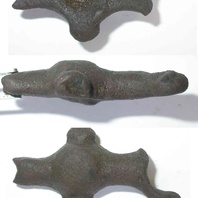
Item
Bridle Fitting (DENO-58B097)
This fragment of cast copper-alloy bridle fitting has a central, sub-circular boss with concave indent to the reverse side. The concave shape of the broken ends of the bars indicate that this fitting originally had a loop at either end.
Read More
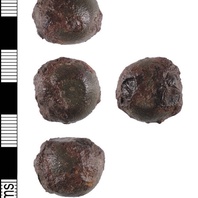
Viking Objects
Globe-Shaped Weight (PUBLIC-D94974)
A globe-shaped copper-alloy weight, with a flat top and bottom each displaying 3 small ring-and-dot motifs. Weights are an important form of evidence for Viking Age commerce and the use of standards across the different economic systems within which Vikings were integrated. Many of the weights discovered, particularly ones in Ireland and those of Arabic type, suggest that a standardized system of weights existed in some areas. These standard weights, alongside standard values of silver, are what allowed the bullion economy of Viking occupied areas to function. A bullion economy was a barter economy that relied on the exchange of set amounts of precious metal in various forms, such as arm-rings or coins, for tradable goods, such as food or textiles. Each merchant would have brought their own set of weights and scales to a transaction to make sure that the trade was conducted fairly.
Read More
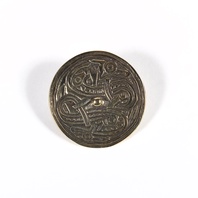
Viking Objects
Reproduction Jellinge-Style Brooch
This brooch contains two S-shaped zoomorphic Jellinge-style designs around a central boss. Brooches like this one were a typical part of female dress. For more information on Scandinavian jewellery in England check out our blog: Brooches, Pendants and Pins: Scandinavian Dress Accessories in England.
